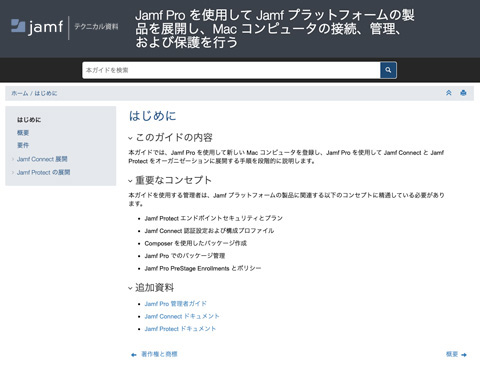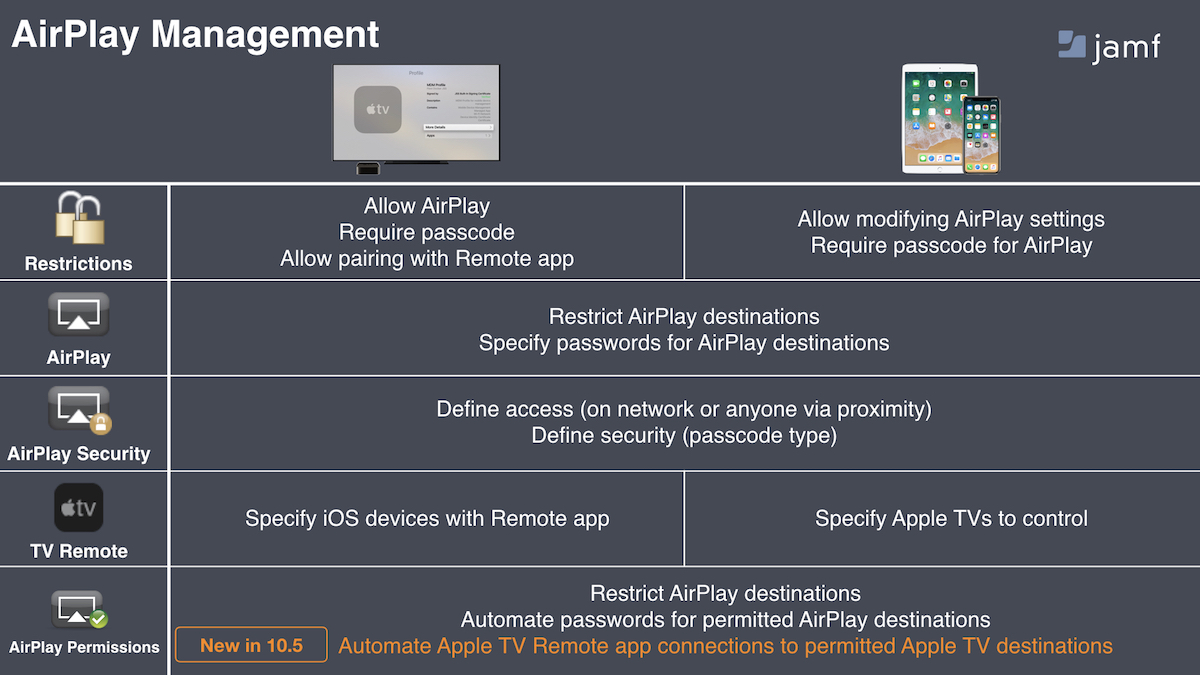

- #Jamf pro 10.27 release notes update
- #Jamf pro 10.27 release notes Patch
- #Jamf pro 10.27 release notes upgrade
The session-timeout value is now configurable in the session.properties configuration file as a "number of seconds value", for example session.Application & Custom Settings (Enhancements)Ĭustom Schema now displays as a pop-up dialog when adding the External Applications payload. As a result, Jamf Pro sessions no longer respect the session-timeout value in web.xml and, by default, will timeout after 1800 seconds (30 minutes). User session management was updated to support clustered sessions. If you have questions or experience any issues during this process, contact Jamf Support. To prevent database issues that could require restoring from a backup, it is important that you do not stop Tomcat or downgrade. This one-time change could cause an increase in startup time, depending on the amount of smart and static groups and the hardware used in your environment.
#Jamf pro 10.27 release notes update
Ubuntu Server 18.04 LTS was moved to the Minimum Supported compatibility level.Ī database schema change will be made to update which tables groups are stored in. Ubuntu Server 20.04 LTS was added to the Recommended compatibility level. If you have questions or experience any issues during this process, contact Jamf Support.Īdded support for Ubuntu Server 20.04 LTS This one-time extended startup could take anywhere from a few additional minutes to several additional hours, depending on the size of your mobile_device_installed_applications table and the hardware used in your environment. Increased startup time: Duplicated columns stored in the mobile_device_installed_applications database table will be moved during the initial server startup when upgrading.

4 GB remains from the original total, so the calculation would be to allocate anywhere from 2 to 3 GB to the InnoDB buffer pool size setting. For example, a server running both Tomcat and MySQL with 16 GB of RAM total has 8 GB allocated to the Tomcat service and 4 GB has been set aside for the system and other processes. However, if the Jamf Pro database server is also hosting Tomcat, calculate this value to be 50 to 70% of the remaining system memory, after accounting for how much is already allocated to the Tomcat service, the operating system, and any other running services on the server. The recommended InnoDB buffer pool size is around 50 to 70% of the total system memory for dedicated database servers. Prerequisite: To ensure the increased startup time change described below does not cause issues in your environment, first verify that the innodb_buffer_pool_size is set to the recommended value.
#Jamf pro 10.27 release notes upgrade
For more information, see the Incremental Upgrade Scenarios for Jamf Pro 10.0.0 or Later Knowledge Base article. A "Jamf Pro Startup Suspended" message will be displayed if an upgrade is attempted.
#Jamf pro 10.27 release notes Patch
If you are using patch definitions from Jamf for patch management in Jamf Pro, your firewall may need to be adjusted to allow communication with the addresses for patch definitions:įor more information about Jamf Pro server connections for patch management, see the Network Ports Used by Jamf Pro Knowledge Base article.Īn incremental upgrade is required for upgrades from 10.13.0 or earlier to Jamf Pro 10.25.0 or later. If you use the Jamf Cloud Distribution Service (JCDS) as a cloud distribution point, your firewall may need to be updated to allow for connection to the updated addresses based on your hosted data region.įor more information about connections to Jamf Cloud, see the Permitting Inbound/Outbound Traffic with Jamf Cloud Knowledge Base article. To ensure continued connectivity to Jamf Cloud services, please verify the following:Įnsure the following sub-domain is able to communicate with your network:


As a result, all inbound connections to Jamf Pro will negotiate via newer versions of TLS to prevent any TLS 1.1 communication. In early 2021, connections over TLS 1.1 will be disabled for environments hosted in Jamf Cloud. Upcoming TLS Changes for Jamf Cloud and Patch Management


 0 kommentar(er)
0 kommentar(er)
